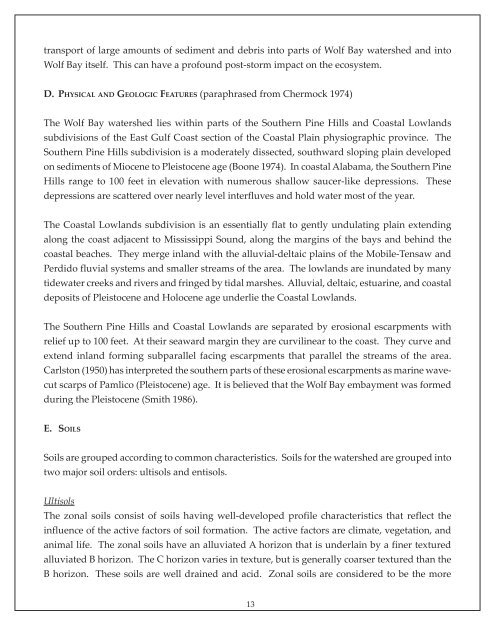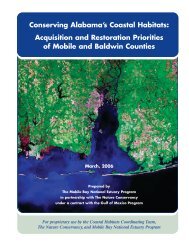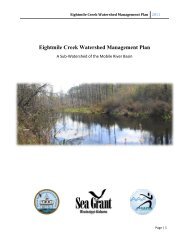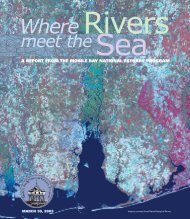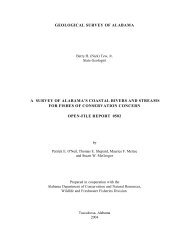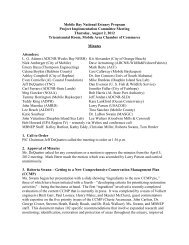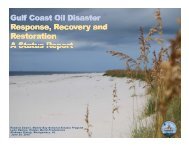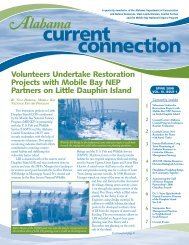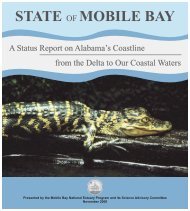Wolf Bay Plan Final - Mobile Bay National Estuary Program
Wolf Bay Plan Final - Mobile Bay National Estuary Program
Wolf Bay Plan Final - Mobile Bay National Estuary Program
- No tags were found...
You also want an ePaper? Increase the reach of your titles
YUMPU automatically turns print PDFs into web optimized ePapers that Google loves.
transport of large amounts of sediment and debris into parts of <strong>Wolf</strong> <strong>Bay</strong> watershed and into<strong>Wolf</strong> <strong>Bay</strong> itself. This can have a profound post-storm impact on the ecosystem.D. PHYSICAL AND GEOLOGIC FEATURES (paraphrased from Chermock 1974)The <strong>Wolf</strong> <strong>Bay</strong> watershed lies within parts of the Southern Pine Hills and Coastal Lowlandssubdivisions of the East Gulf Coast section of the Coastal Plain physiographic province. TheSouthern Pine Hills subdivision is a moderately dissected, southward sloping plain developedon sediments of Miocene to Pleistocene age (Boone 1974). In coastal Alabama, the Southern PineHills range to 100 feet in elevation with numerous shallow saucer-like depressions. Thesedepressions are scattered over nearly level interfluves and hold water most of the year.The Coastal Lowlands subdivision is an essentially flat to gently undulating plain extendingalong the coast adjacent to Mississippi Sound, along the margins of the bays and behind thecoastal beaches. They merge inland with the alluvial-deltaic plains of the <strong>Mobile</strong>-Tensaw andPerdido fluvial systems and smaller streams of the area. The lowlands are inundated by manytidewater creeks and rivers and fringed by tidal marshes. Alluvial, deltaic, estuarine, and coastaldeposits of Pleistocene and Holocene age underlie the Coastal Lowlands.The Southern Pine Hills and Coastal Lowlands are separated by erosional escarpments withrelief up to 100 feet. At their seaward margin they are curvilinear to the coast. They curve andextend inland forming subparallel facing escarpments that parallel the streams of the area.Carlston (1950) has interpreted the southern parts of these erosional escarpments as marine wavecutscarps of Pamlico (Pleistocene) age. It is believed that the <strong>Wolf</strong> <strong>Bay</strong> embayment was formedduring the Pleistocene (Smith 1986).E. SOILSSoils are grouped according to common characteristics. Soils for the watershed are grouped intotwo major soil orders: ultisols and entisols.UltisolsThe zonal soils consist of soils having well-developed profile characteristics that reflect theinfluence of the active factors of soil formation. The active factors are climate, vegetation, andanimal life. The zonal soils have an alluviated A horizon that is underlain by a finer texturedalluviated B horizon. The C horizon varies in texture, but is generally coarser textured than theB horizon. These soils are well drained and acid. Zonal soils are considered to be the more13


